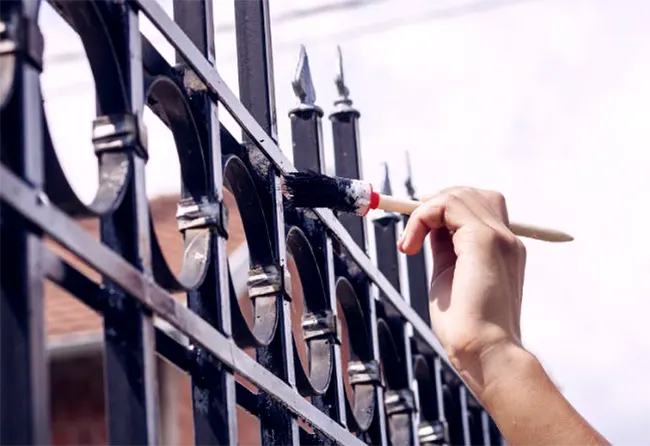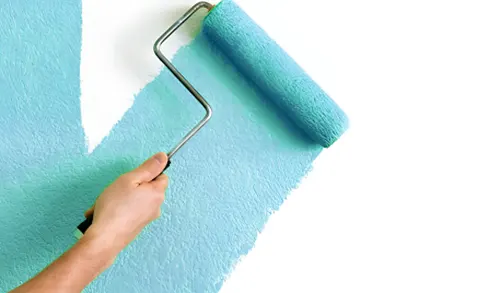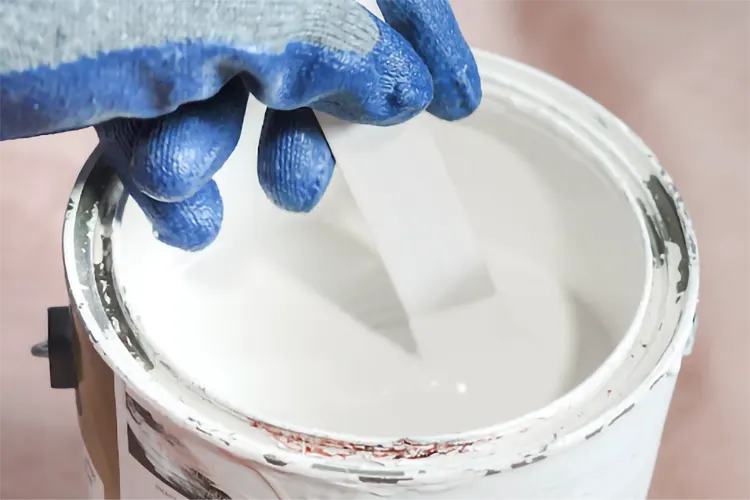Picking the right paint for a project can feel overwhelming. Walk into any paint store, and the options seem endless. Should you get paint mixed on the spot? What about those pre-packaged cans? And how do you know which type will actually last on your specific surface, whether it’s weathered wood siding or a busy concrete garage floor?This is when knowing mixed paint becomes useful. Getting it properly ensures your project not only looks amazing but also withstands the environment and daily wear.
Let us help you to fix this issue. By closely examining the paint substrate, the paint’s life circumstances, and your painting requirements, we will guide you in choosing the appropriate coating. We will also cover the key factors influencing paint price and how they vary from buying pre-made paint to having custom blended mixing paint color. We can assist you in completing your next project.
How to Select Mixed Paint for Your Project?
So you’ve discovered the ideal color? Great! But wait, picking paint is more than simply the color. Have you ever wondered why certain paint jobs endure so well while others flake and fade so quickly? It generally boils down to matching the paint to the surface and what it can withstand. It’s similar to choosing the correct gear; you need rugged boots for a muddy trail, not dress shoes! Getting this right from the outset is your greatest shot for avoiding do-overs, lost money, and the sinking feeling of ‘why didn’t this work?’. Let’s get into what actually matters.
Understanding Your Surface
The material you’re painting, known as the paint substrate, dictates much of your decision. Different surfaces have unique needs.

- Metal: Though rusty, metals like steel and aluminum are robust. This is especially true in damp or outdoor areas. Epoxy paints are chemical-resistant and sticky. Standard epoxy can yellow or chalk in sunlight, therefore it normally needs a polyurethane coating for outdoor usage. Polyurethane is UV-resistant and flexible. Zinc-rich primers protect steel against rust by sacrificing themselves. POR-15 is special because it can cover rust, however it needs a UV-blocking topcoat if exposed to sun. Always verify if your blended paint will work with previous coatings or metal treatments.
- Concrete: Seems robust yet is permeable like a sponge. It absorbs water, reacts with chemicals (because to its high pH), and fractures. Due to its durability and chemical resistance, epoxy is widely used to coat concrete floors in garages and factories. Water-based epoxy is easier to work with but may not protect as effectively. Because it doesn’t fade in UV light or react negatively to temperature fluctuations, polyurethane works well on outdoor concrete sidewalks. Simpler acrylic paints can offer beautiful color to walls and floors that don’t need as much protection. Concrete walls outside benefit from elastomeric coverings because they let air through, keep water out, and stretch over minor crevices.
- Wood: Natural and beautiful, wood varies with temperature and humidity. Moisture and UV damage can cause swelling or decay. Cedar and redwood, which tend to leak tannin, benefit from an oil-based primer outdoors. Acrylic latex paints breathe, withstand UV radiation, and are flexible topcoats. Polyurethane is UV-resistant and durable for outdoor furniture and wood decks. Advanced options include nano-SiC coatings that prevent wood floor scratches. This wood paint selecting tool prioritizes UV protection.
Considering Where Your Paint Will Live
The environment plays a huge role in how long your paint job lasts.
Sunlight (UV Radiation): The sun’s UV rays can damage paint the same way they can damage our skin. This damages the paint, cause it to fade, chalk (make a surface that looks like powder), or crack. Wood and concrete can also wear away when they are exposed to UV light. Polyurethane coatings are champions at handling UV light. Acrylic paints also offer good UV resistance and keep their color well. For very tough conditions, fluoropolymer coatings (often used in industrial or aerospace settings) are excellent. Remember, standard epoxy needs a UV-resistant topcoat outdoors.
Chemicals: In places like factories, workshops, garages, or even near swimming pools, paint often exposed to harsh chemicals (acids, cleaners, solvents). These can eat away at the wrong type of coating. Epoxy paints are generally very good at resisting chemicals. Special types like phenolic epoxies are even tougher, often used inside tanks. Fluoropolymers also boast outstanding chemical resistance. For specific needs, like military equipment, Chemical Agent Resistant Coatings (CARC) are used. This is a critical factor in your paint selection guide for industrial settings.
Moisture and Humidity: Water is paint’s enemy in many ways. It causes rust on metal, can lead to cracking or mold on concrete, and promotes rot in wood. High humidity can also mess with how paint dries (cures) and sticks. Some coatings, like POR-15, actually use moisture in the air to cure, making them great for damp areas. Polyurethane repels water well. Elastomeric coatings for concrete let moisture vapor escape (breathability) while blocking liquid water, preventing blisters. Making sure the surface temperature is warmer than the dew point during application is important to prevent condensation issues.
What Does Your Mixed Paint Need to Do?
Beyond just covering the surface, what specific job does the paint need to perform? Paint is often a protective and functional covering designed to satisfy specific needs. The surface and surroundings may need the paint to survive extreme weather, physical stress, or frequent movement. Selecting the proper paint requires knowing its purpose.

Latex paints made by mixing and blending
- Fighting Rust (Corrosion Resistance): Absolutely essential for metal. Zinc-rich primers provide excellent protection for steel. Encapsulating coatings like Rust Grip® literally seal the metal off from air and water. Epoxy coatings create a strong barrier. The specific choice depends on how severe the environment is (e.g., coastal vs. inland). Good paint performance here is crucial for longevity.
- Staying Flexible: Some surfaces, like wood or large concrete slabs, expand and contract with temperature changes. Paint needs to move with them without cracking. Polyurethane is known for its flexibility. Elastomeric coatings are champions here, able to stretch significantly to bridge small cracks in concrete or masonry. This flexibility contributes to overall paint performance.
- Being Tough (Durability and Abrasion Resistance): High-traffic areas like floors, decks, or machinery need paint that can withstand scuffs, scratches, and general wear. Epoxy coatings are very durable and resist abrasion well, making them ideal for floors. Polyurea coatings (often used for truck bed liners) are also extremely tough. Even specialized additives like nano-SiC can boost the abrasion resistance of paints for wood flooring.
To make the right choice, you need to balance these things. You might need a paint that doesn’t rust or fade in the sun, like an Mixed epoxy base with a Mixed polyurethane topcoat system for steel that will be used outside. It is always a good idea to look at the manufacturer’s technical data sheets because they give you a lot of information about how the paint works and what kinds of surfaces it can be used on. If you’re still not sure, asking the experts at a good paint store can help you with your project and give you choices for custom color paint that meets these performance needs. Don’t forget to think about safety. If you can, choose low-VOC (Volatile Organic Compound) paints, especially for indoor use, and always follow safety rules when working with paints, especially solvent-based ones.
Mixed Paint vs Premixed Paint: What’s the Difference?
Okay, so you’re ready to buy paint, and you head to the store. What do you see? Usually, you’ve got two main paths: you can grab a can of paint that’s already mixed up in a standard color right there on the shelf, or you can ask the experts to whip up a custom shade just for you, mixed on the spot. On the wall, they might look pretty similar at first glance, but trust me, there are some important differences you need to know about shelf life, consistency, and how much freedom you have with color.

On-site paint mixing
How Long Does It Last?
How long can you keep that can of paint before it goes bad? It depends.
On-Site Mixed Paint: Usually a base paint—white or neutral—with colorants applied by machine at the store, this is on-site mixed paint. An unopened can of base paint may survive around ten years if kept correctly in a cold, dry location. Once colorants are added, the shelf life is comparable, albeit somewhat lower—about 2 to 5 years if opened and resealed firmly to minimize air exposure, which can cause peeling or bacterial development in water-based paints. Moisture or faulty mixing can shorten shelf life even further. Components in two-part paints like epoxies may survive years apart but the “pot life” is just hours before hardening once combined.
Factory Pre-mixed Paint: These include typical whites, beiges, or trendy hues fully formulated, tinted, and canned at the plant. Unopened, particularly oil-based ones, can endure 10 to 15 years because of the regulated production environment. Opened, they survive 2 to 10 years if kept properly; glossier coatings usually outlive flat ones. While bad storage, such as freezing or loose lids, might still destroy them, their manufacturing uniformity lowers contamination concerns.
Both paint offers a long shelf life when sealed properly and stored in the right condition. For really long-term storage, factory pre-mixed may be slightly more dependable.
Will It Look and Perform the Same Every Time?
Consistency is key, especially if you need to touch up later or paint a large area.
On-Site Mixed Paint: One of the benefits of custom colors is their ability to provide exact matches (e.g., to current trim) by means of scanning and mixing. Color accuracy, thus, depends on the tinting machine’s calibration and operator expertise; little batch differences are conceivable, particularly for dark or bright hues. Matching the same shade later or at a different place can be tough. When mixed right, it works just as well as ready-made paint of the same grade, but if it’s not blended fully, you could end up with uneven color or streaks. The performance of on-site paint mixing depends heavily on the quality of the base paint and the experience of the mixing master.
Factory Pre-mixed Paint: Ready-made paint gives you better color matching because it’s made under strict controls in big factories. A shade like “Swiss Coffee” white looks almost the same no matter which can you grab or where you buy it, which is great for big jobs. The set recipe means the thickness and flow stay steady, so it goes on smooth and predictable. You can count on its performance since it’s tested a lot, cutting down on problems like patchy spots or weak sticking.
Factory-made paint is the better pick for steady color and easy use because of its uniform production, making it a safe bet for jobs needing everything to match. Paint mixed on-site gives you the freedom to create custom shades, but there’s a chance of small differences between mixes. Click here to see how to properly mix paint on site. If you want a one-of-a-kind color, careful mixing at the store is the way to go; if matching matters most, stick with ready-made. A solid paint guide helps balance these choices.
| Aspect | On-Site Mixed Paint | Factory Pre-mixed Paint |
|---|---|---|
| Customization | Custom shades can be mixed to match specific needs (e.g., matching a sofa color). | Limited to standard, pre-chosen colors; no custom shades. |
| Availability | Most paint stores offer on-site mixing with tinting machines; walk out same day with custom paint. | Standard colors are readily available off-the-shelf in many stores. |
| Quantity Control | Can order exact amounts (quart, gallon, 5-gallon), reducing waste. | Often must buy pre-set quantities (e.g., full gallon) even if less is needed. |
| Convenience | Quick customization but depends on staff skill and machine accuracy; cross-store matching may vary. | No waiting for mixing; easier, faster purchase experience. |
| Inventory Management | Stores stock fewer bases, saving shelf space compared to carrying thousands of pre-mixed colors. | Requires large shelf space for a wide range of colors, which may limit availability in some stores. |
| Potential Downsides | Depends on equipment and staff; color matching may not be identical between different locations. | Possible waste due to buying more than needed; special orders can have lead times. |
How Much Does Mixed Paint Cost?
Time to talk budget! Let’s face it, paint prices can be all over the map. Why does that one gallon cost $20 while this other one is three times as much? It’s not random, I promise! The final price tag on a can of mixed paint – whether it’s a standard color you grabbed or that special custom mix – is directly influenced by several key factors. Understanding these paint cost factors is crucial; it helps you decide where a higher price means genuine value and where you might be able to save. Paints vary in quality and price, frequently reflecting what goes into the can. Three key elements affect paint quality, performance, and appearance and substantially affect cost:
- Pigment Content: Usually, the most costly component of the paint is pigment content. Pigments give the hue and concealing ability (how well the paint covers the surface underneath). High-quality paints employ more and better pigments. Expensive titanium dioxide is the main ingredient for bright, opaque white paints. Often, cheaper paints use silica or clay as fillers, which suggests you could require more coats for decent coverage. This is a significant factor setting apart a $20 gallon from a $60 premium one. Artist paints are an extreme case; tiny tubes can run $10 to $50 or more, mostly because of rare or costly pigments including cadmium or cobalt. Paints with rich, deep hues or great hiding ability will cost more since they depend on greater quality pigment concentration. This is a main expense for painting.
- Resin Quality (The Binder): Resin (Polymer Types) glues pigment particles together and allows paint to stick. It affects paint longevity, washability, and finish (gloss or matte). Top-quality acrylics, urethanes, and epoxy resins provide harder, longer-lasting films. Cheaper paints utilize inferior binders that may not adhere or clean effectively. This is why expensive house paints ($40-$70/gallon) last longer than budget ones ($10-$20/gallon). Epoxy paints ($50–150/gallon) employ durable resins for garage flooring. Alkyd or natural oil resins and solvents (paint thinner) make oil-based paints more expensive than water-based latex paints. Quality resins affect paint performance and cost.
- Custom Color Fees: Getting that perfect, unique shade sometimes comes with an extra charge, but not always. For most house paints, if you pick a color from the store’s standard palette, mixing it using their machine is usually free. They factor the cost of basic colorants into the base paint price. Places like Home Depot or Sherwin-Williams typically offer this. You might see extra fees ($5-$15 per gallon for house paint) is when you need a very specific match, a historical color, or a shade requiring special pigments (like metallics or pearlescents). If you do it yourself, you will need to master some basic paint mixing and color matching techniques.
Typical Price Ranges (General Idea).
- House Paint: $10-$20 (low end), $20-$30 (mid-range latex), $40-$70 (premium/professional).
- Automotive Paint: $100-$600 per gallon, depending heavily on type and quality.
- Epoxy Paint: $50-$150 per gallon for quality floor coatings.
Knowing these things about paint costs can help you figure out why prices vary. A higher price doesn’t always mean better results, but it usually means that the ingredients (pigments and resins) are better, which means that the paint covers better, lasts longer, and works better overall. Making sure that your budget and the needs listed in your paint decision guide work together is very important. It’s sometimes worth it to spend a little more on better paint up front because it lasts longer and needs fewer coats. Remember that paint has a shelf life. It may cost more to buy too much cheap paint that goes bad than to buy the right amount of a good product.
After all, selecting the appropriate mixing paint need not be a shot in the dark. You’re now miles ahead by methodically considering the essentials—beginning with your surface (that vital paint substrate!), matching the paint’s task to its surroundings (knowing needed paint performance!), evaluating your choices between on-site custom color paint and factory pre-mixed (don’t forget paint shelf life!), and investigating those paint cost elements (it’s usually about pigment and resin quality!). You are prepared to boldly choose a coating that will not only look great but really stand the test of time. Following these procedures guarantees a finish you will really be pleased of.
Ready to look for that ideal can? Whether you want consistent factory paint or a particular custom color paint mix, negotiating all the choices can still be difficult. You don’t have to go it alone, though! Coatingsdirectory.com links you straight to reliable paint suppliers and nearby experts who can offer precisely the goods and knowledge your project requires.
Discover your ideal blended paint solution and professional assistance at coatingsdirectory.com now!
FAQs
What's the biggest factor making some mixed paint more expensive?
Usually, it’s the quality and amount of pigment used. Pigments provide color and coverage; premium ones like titanium dioxide are costly but perform better, directly impacting the price and quality. Resin quality is also a major factor.
Is custom mixed paint better than pre-mixed paint off the shelf?
Not necessarily better, just different – it depends on your needs. Custom mixed paint offers unlimited color choice, while factory pre-mixed guarantees high color consistency between cans, which is ideal for large projects or standard colors.
How long does custom mixed paint last once I open the can?
Typically, 2 to 5 years if you seal it tightly. Proper storage (cool, dry place, airtight seal) is key to maximizing the paint shelf life of opened mixed paint by preventing contamination and drying out.
Do I really need a special type of mixed paint for metal surfaces?
Yes, usually you need paint designed to prevent rust. Metal requires coatings offering good adhesion and corrosion resistance, like epoxy or zinc-rich primers, especially outdoors, to ensure durability and prevent premature failure.
Does getting custom color paint mixed always cost extra?
No, not usually for standard colors mixed in-store. Basic tinting at most stores is free. Paint cost factors like extra fees typically apply only for complex color matching, historical shades, or specialty pigments like metallics.

